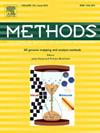Inside the cell: Approaches to evaluating mRNA internalization and trafficking
IF 4.3
3区 生物学
Q1 BIOCHEMICAL RESEARCH METHODS
引用次数: 0
Abstract
With the growing prominence of mRNA-based therapeutics and vaccines, accurately assessing the cellular uptake of mRNA complexes is a critical first step in evaluating both the efficiency of delivery systems and their downstream therapeutic potential. This is especially important when working with novel mRNA constructs, comparing different delivery vectors, or targeting diverse cell types. In this study, we present a suite of methods to quantify and visualize mRNA internalization following transfection of three types of human primary cells: mesenchymal stromal cells, fibroblasts, and osteoblasts. We highlight the utility of fluorescent probes for both qualitative and quantitative assessment of mRNA uptake and intracellular trafficking. To dissect the pathways involved in uptake, we employed three distinct endocytic inhibitors—chlorpromazine, wortmannin, and genistein—each targeting specific endocytic mechanisms. Additionally, we provide protocols for the lipid-based transfection agents Lipofectamine 3000 and 3DFect, which can be adapted for use with similar vectors. Key methodologies such as flow cytometry and correlative light and electron microscopy, known as CLEM, are described in detail for their effectiveness in analyzing mRNA internalization. A deeper understanding of the internalization and intracellular fate of mRNA is essential for the advancement of more efficient and safer mRNA-based delivery platforms.

细胞内部:评估mRNA内化和运输的方法
随着基于mRNA的治疗方法和疫苗的日益突出,准确评估mRNA复合物的细胞摄取是评估递送系统效率及其下游治疗潜力的关键第一步。当使用新的mRNA结构、比较不同的传递载体或靶向不同的细胞类型时,这一点尤为重要。在这项研究中,我们提出了一套量化和可视化转染三种人类原代细胞(间充质基质细胞、成纤维细胞和成骨细胞)后mRNA内化的方法。我们强调荧光探针对mRNA摄取和细胞内运输的定性和定量评估的效用。为了剖析摄取的途径,我们采用了三种不同的内吞抑制剂——氯丙嗪、wortmannin和染料木黄酮——每一种都针对特定的内吞机制。此外,我们还提供了基于脂质的转染试剂Lipofectamine 3000和3deffect的方案,它们可以用于类似的载体。关键的方法,如流式细胞术和相关的光和电子显微镜,被称为CLEM,详细描述了他们在分析mRNA内化的有效性。更深入地了解mRNA的内化和细胞内命运对于开发更高效、更安全的mRNA传递平台至关重要。
本文章由计算机程序翻译,如有差异,请以英文原文为准。
求助全文
约1分钟内获得全文
求助全文
来源期刊

Methods
生物-生化研究方法
CiteScore
9.80
自引率
2.10%
发文量
222
审稿时长
11.3 weeks
期刊介绍:
Methods focuses on rapidly developing techniques in the experimental biological and medical sciences.
Each topical issue, organized by a guest editor who is an expert in the area covered, consists solely of invited quality articles by specialist authors, many of them reviews. Issues are devoted to specific technical approaches with emphasis on clear detailed descriptions of protocols that allow them to be reproduced easily. The background information provided enables researchers to understand the principles underlying the methods; other helpful sections include comparisons of alternative methods giving the advantages and disadvantages of particular methods, guidance on avoiding potential pitfalls, and suggestions for troubleshooting.
 求助内容:
求助内容: 应助结果提醒方式:
应助结果提醒方式:


